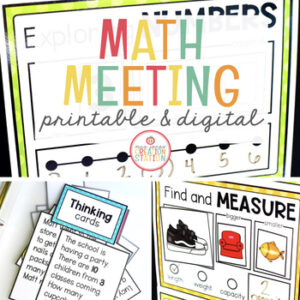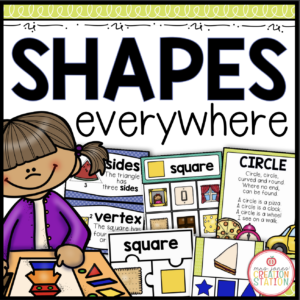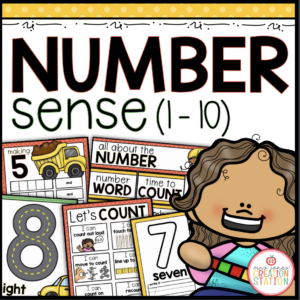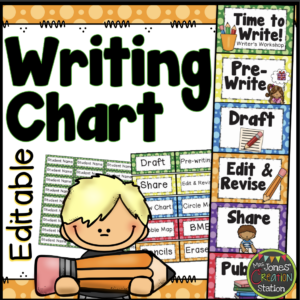Menu
Celebrate a NEW school year with these fun, engaging Chicka Chicka Boom Boom activities! Foster a love for learning with these engaging alphabet activities. These interactive and hands-on activities will capture students’ attention and motivation all while having fun!
This resource pack is full of math and literacy centers that focus on letter formation, letter identification, rhyming, counting, color matching and so much more!
Use the Chicka Chicka Boom Boom Scavenger Hunt to get your new learners familiar with their new school!
Buy the BUNDLE and SAVE! You can purchase this resources in the Thematic Activities for Little Learners Bundle and the Little Learners Mega-Bundle!
Scavenger Hunt
Emergent Reader
*BONUS* Tracing Cards
Math and Literacy Centers:
-Letter Clip Cards
-Initial Sound Match
-Letter Formation
-Rhyming Match
-Letter, Word, Number Sort
-Short Vowel Match
-Letter Matching
-Syllable Match
-2D Shape Match
-Counting
-Color Match
-Number Formation
-Patterns
-Positional Words
-Same and Different
-Sorting Colors
These activities support the development of essential pre-reading skills, such as letter recognition, phonemic awareness, and letter-sound correspondence, paving the way for future reading and writing success.
⭐⭐⭐⭐⭐ What Teachers Are Saying:
“I used this resource during a summer enrichment program. I will use it during the first week of school this fall. Excellent resources. Contains so many literacy and math activities.” -Beth Q.
“An incredible resource that contains so many activities that I use with my class! I love how colorful the pages are for the students. It has been a great resource to provide practice with so many different skills. ” -Lacey F.
“This resource was jam-packed with incredible literacy and math activities that went perfectly with our beginning of the school year them, Chicka, Chicka, Boom Boom! Thanks for all your hard work on making learning fun and engaging!” -Jessica B.
YOU MIGHT ALSO LIKE:
WEBSITE | FACEBOOK | INSTAGRAM | PINTEREST | TEACHERS PAY TEACHERS
© Mrs. Jones’ Creation Station, Inc
How can I see what is new in the MJCS store?
Be the first to know about new discounts, freebies, and new products. You can also subscribe to our newsletter to receive access to resources only available to MJCS subscribers, as well as, special offers and ideas!
How can I get credit for my TpT purchases?
Go to your account button at the top of the page. Under the “Buy” section, click “My Purchases “. Beside each purchase you’ll see a Provide Feedback button. Simply click the button and you will be taken to a page where you can give a quick rating and leave a comment for the product. Each time you give feedback, TpT gives you feedback credits that you use to lower the cost of your future purchases. Please leave detailed feedback for each resource, so we are able to create better resources for teachers and students.
How can I find a certain activity in a large PDF file?
If the resource you purchase has a variety of activities compiled into one PDF find the table of contents and click on the activity title. This should take you to that specific activity in the resource.
What can I do if I have a question about a resource?
If you have any questions regarded a resource before purchasing please email me at mrsjonescreationstation[at]gmail.com. Once you have purchased the resource you may use the “Product Q and A” tab on the product page to ask a question, as well.
How do I know if a resource has been updated?
Go to your account button at the top of the page. Under the “Buy” section, click “My Purchases “. Choose to “sort by: recently updated” to see what resources have been updated since you downloaded them last. You can download any updates from there. If a file has been updated, you will see a notification under the resource that says “Newly Updated – Download for Free!”
This item is a paid product created by Mrs. Jones’ Creation Station, Inc. Copying any part of this product, redistributing, selling or placing it on the internet in any form is strictly forbidden and is a violation of the Digital Millennium Copyright Act (DMCA). Thank you for respecting our work!
YES, YOU CAN…
NO, YOU CAN’T…
Click here for a detailed post with step-by-step directions.
You will need to download fonts specified in the resource and install it on your computer before downloading the editable file.
Install the most recent version of Adobe Reader onto your computer. If you have any problems editing, viewing or printing a file make sure your Adobe Reader is updated.
Now you can download the file to your computer. Once the file has downloaded open in Adobe Reader. You should be able to view the editable fields and the text should match the product description. If you have any problems editing the file, make sure you have followed the directions above and then contact me at mrsjonescreationstation[at]gmail.com




